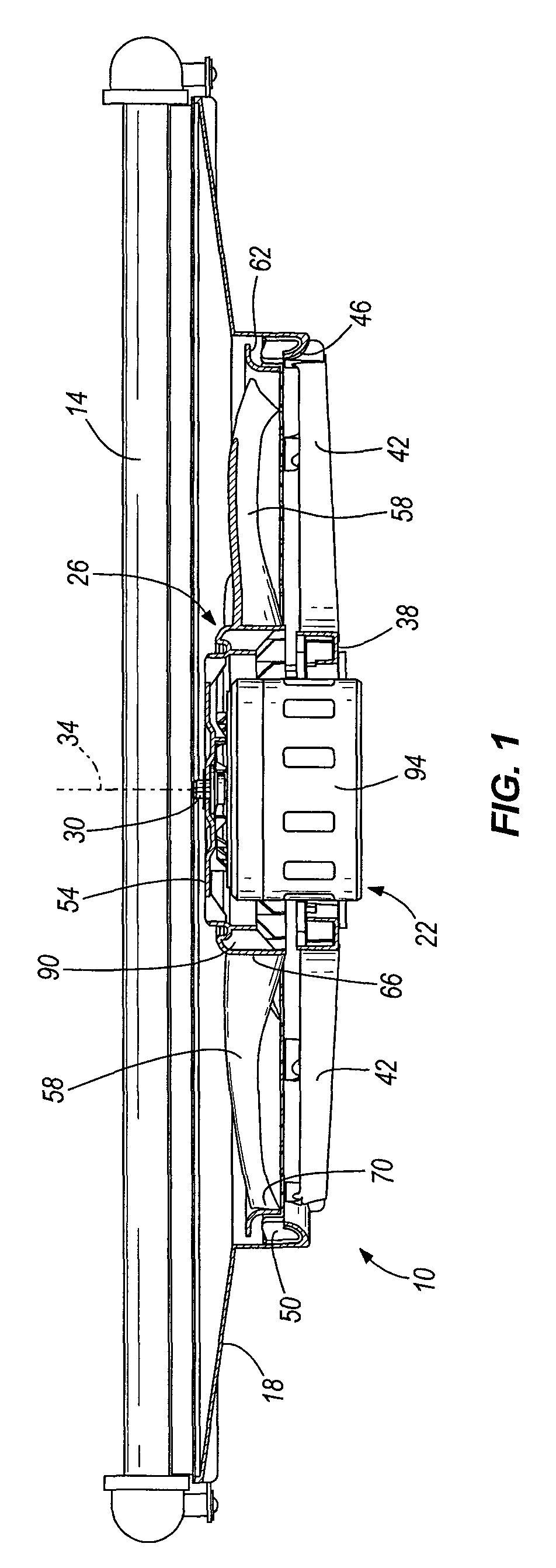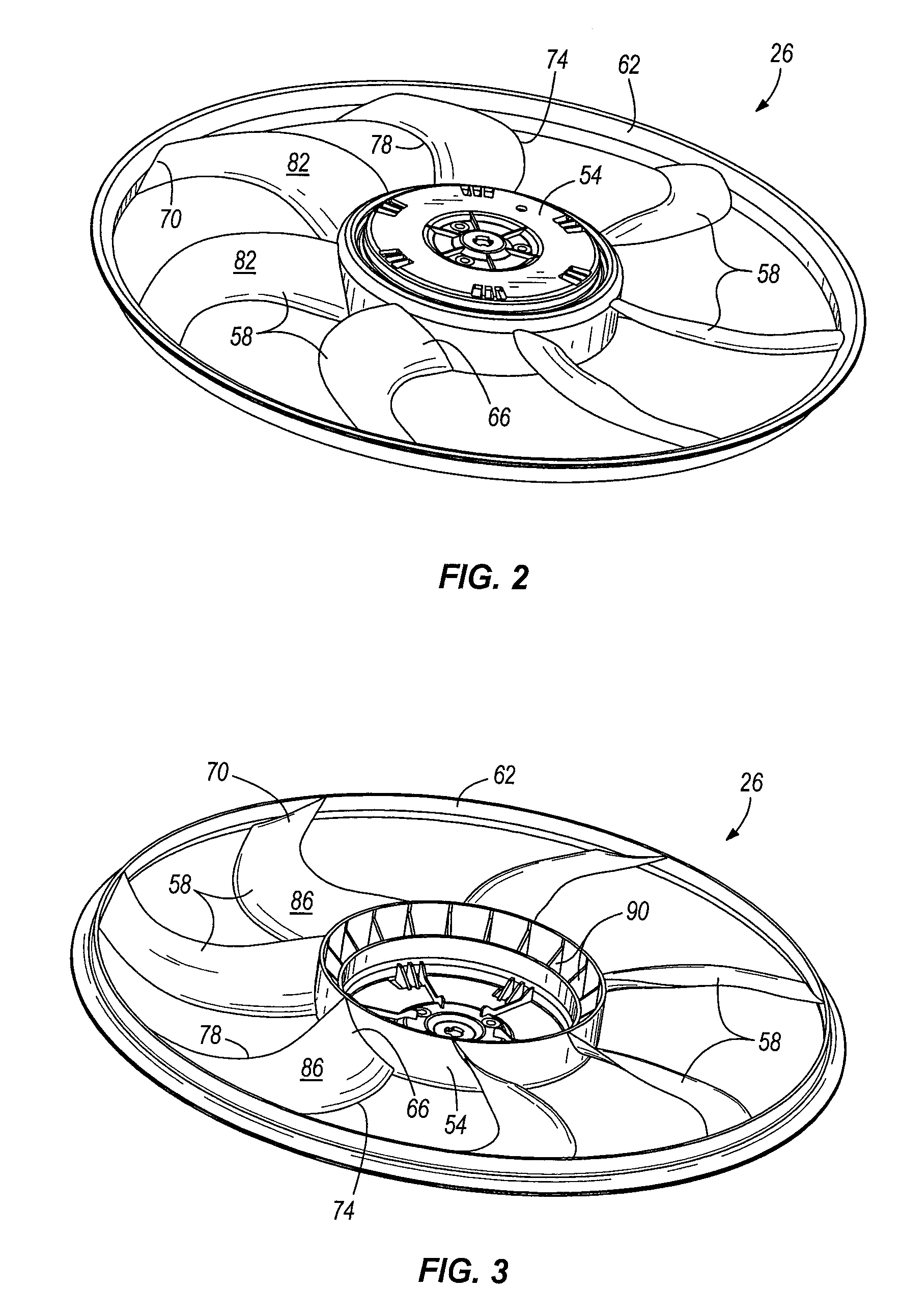Axial fan assembly
a technology of axial fans and blades, which is applied in the direction of liquid fuel engines, vessel construction, marine propulsion, etc., can solve the problems of reducing the efficiency of the tip of the axial fan blade to generate pressure, the inward radial inflow velocity is relatively high near the tip of the axial fan blade, and the design goal is complicated. , to achieve the effect of low noise and high efficiency
- Summary
- Abstract
- Description
- Claims
- Application Information
AI Technical Summary
Benefits of technology
Problems solved by technology
Method used
Image
Examples
Embodiment Construction
[0020]FIG. 1 illustrates an axial fan assembly 10 coupled to a heat exchanger 14, such as an automobile radiator. However, the axial fan assembly 10 may be utilized in combination with the heat exchanger 14 in any of a number of different applications. The axial fan assembly 10 includes a shroud 18, a motor 22 coupled to the shroud 18, and an axial fan 26 coupled to and driven by the motor 22. Particularly, as shown in FIG. 1, the motor 22 includes an output shaft 30 for driving the axial fan 26 about a central axis 34 of the output shaft 30 and the axial fan 26.
[0021]The axial fan assembly 10 is coupled to the heat exchanger 14 in a “draw-through” configuration, such that the axial fan 26 draws an airflow through the heat exchanger 14. Alternatively, the axial fan assembly 10 may be coupled to the heat exchanger 14 in a “push-through” configuration, such that the axial fan 10 discharges an airflow through the heat exchanger 14. Any of a number of different connectors may be utilize...
PUM
 Login to View More
Login to View More Abstract
Description
Claims
Application Information
 Login to View More
Login to View More - R&D
- Intellectual Property
- Life Sciences
- Materials
- Tech Scout
- Unparalleled Data Quality
- Higher Quality Content
- 60% Fewer Hallucinations
Browse by: Latest US Patents, China's latest patents, Technical Efficacy Thesaurus, Application Domain, Technology Topic, Popular Technical Reports.
© 2025 PatSnap. All rights reserved.Legal|Privacy policy|Modern Slavery Act Transparency Statement|Sitemap|About US| Contact US: help@patsnap.com



